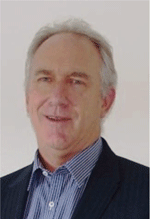Monitoring marine effects of produced formation water discharge in Bass Strait
Lachlan Barnes A , Katrina Hall B C , Craig Blount A , Madelaine Hooper A , David van Senden A , Andrew Costen A , Chris Scraggs A , David Provis A and Daniel Pygas AA Cardno Pty Ltd, Level 9, 203 Pacific Highway, St Leonards, NSW 2065, Australia.
B Esso Australia Pty Ltd, Level 9, 664 Collins Street, Docklands, Victoria 3008, Australia.
C Corresponding author. Email: Katrina.L.Hall@exxonmobil.com
The APPEA Journal 59(1) 1-24 https://doi.org/10.1071/AJ18226
Submitted: 14 December 2018 Accepted: 25 February 2019 Published: 17 June 2019
Abstract
Esso Australia Pty Ltd (Esso), in a joint venture with BHP Petroleum Pty Ltd, operates 23 oil and gas production platforms and subsea facilities off the Victorian coast near Gippsland, Australia. The underlying reservoirs have multi-darcy sands and a strong aquifer water drive, so in addition to oil and gas, the extraction activities result in substantial amounts of produced formation water (PFW). Following on-platform treatment, PFW containing a variety of hydrocarbons, ions and inorganics, such as calcium, ammonia, sulfate and trace metals, is discharged into the receiving environment. This paper reports on a study undertaken to investigate the potential effects of PFW discharges from two platforms (Tuna (TNA) and West Kingfish (WKF)) on the receiving environment. Four complementary sampling approaches were used to address the objectives of the study: (1) measure and estimate the dilution of Rhodamine FWT dye solution in the receiving environment following injection into the PFW discharge line, (2) collect and analyse undiluted PFW samples before discharge, (3) collect and analyse marine water samples from within the discharge plume and (4) collect and analyse sediment and benthic infauna samples at various distances away from platforms and at reference locations. Results indicate the rate of PFW dilution within the receiving environment is more rapid than predicted by existing numerical models and that the concentration of all analytes present in PFW were below Australian and New Zealand Environment Conservation Council (ANZECC) 2000 guideline trigger values for 80% protection; moreover, with one exception, analytes were not detected above background levels more than 59 m from the platform. With the exception of a few samples containing metals, specifically arsenic, copper, lead, zinc and nickel, concentrations of analytes in the majority of sediment samples collected were below the ANZECC 2000 and revised 2013 sediment quality guidelines. A diverse range of benthic infauna were sampled, with the abundance of a limited number of taxa influenced by distance from individual platforms. No substantial differences in abundances of benthic infauna were detected at distances greater than 1.3 km from TNA and 1.0 km from WKF, compared with reference locations. These results indicate that PFW discharges from TNA and WKF likely represent a low risk to the receiving environment.
Keywords: analytes, Australia, benthic infauna, concentration, dilution, discharge, model, oil and gas, platform, plume, rhodamine dye, sediment, sediment quality, species distribution, Victoria.

Lachlan Barnes holds a PhD (Marine Ecology) from Macquarie University and is currently Group Manager for the Environment for the Water and Environment business unit at Cardno. Lachlan has more than 15 years’ experience in the field of aquatic ecology and biology with extensive experience in the design, implementation and realisation of numerous research projects. This experience includes the coordination of large, multidisciplinary project teams and the development of complex sampling methodologies for monitoring and assessment programs. His specific areas of expertise include biology and ecology of marine fishes, marine habitat surveys, sediment sampling and experimental design, including data analysis. |

Katrina Hall holds degrees in Environmental Engineering (Hons) and Commerce from the University of Melbourne, and is a Senior Environmental Advisor for Esso Australia Pty Ltd, which is a subsidiary of ExxonMobil Australia Pty Ltd, She has more than 16 years of experience with ExxonMobil, having worked in various roles, including production engineering and reservoir engineering, but has spent the majority of her career in the Environmental Team. In her capacity as an Environmental Specialist, she has been involved in environmental aspects assessments and energy efficiency assessments, prepared environmental management and monitoring plans and environmental business plans, managed Esso’s relationship with environmental regulators, prepared for and advocated carbon emissions reporting and provided environmental advice to Esso’s operating facilities. |

Craig Blount has a PhD in Reef Ecology and a Graduate Diploma in Industrial Maths and Computing. As a Regional Senior Principal with Cardno, with 25 years of experience in environmental consulting and fisheries science, Craig has been able to apply his trade in all marine ecosystems, ranging from the tropical to the temperate and the intertidal to the deep ocean. Craig has had the good fortune to work on a diverse range of marine ecological investigations for Cardno’s oil and gas clients and has a reputation for delivering quality studies based on sound scientific advice within a tight timeframe. In recent years, Craig and his colleagues have been delivering nearshore and offshore monitoring programs to meet their clients’ compliance obligations, biophysical studies around platforms and fish-habitat studies in relation to decommissioning of subsea infrastructure. Craig has published in the fields of fisheries biology, marine ecology and fisheries enhancement and is a member of the Australian Coral Reef Society. |

Madelaine Hooper has a Masters of Environmental Science, Bachelor of Environmental Science with a double major in Biology and Environmental Management, Bachelor of International Business and Bachelor of Commerce majoring in economics from Griffith University in Queensland and the Royal Melbourne Institute of Technology in Victoria. Madelaine has 5 years’ experience in scientific research and consulting and is currently working at Cardno as an Environmental Scientist. Prior to this, Madelaine worked in insurance and strategic advice in both private and public organisations. Madelaine is a member of Environmental Institute of Australia and New Zealand and Professional Scientists Australia. |

David van Senden has over 25 years’ experience in providing services to clients in the oil and gas industry, water utilities, port development and catchment and coastal zone management. After graduating in 1980 with a BSc(Hons) from Flinders University of South Australia, David worked at the Australian Institute of Marine Science in Townsville in the Physical Oceanography team. He took up a PhD scholarship at the University of Western Australia (UWA), in 1982 and, following the completion of his PhD in 1987, moved to Switzerland where he spent 3 years as a Post-Doctoral Research Fellow investigating mixing processes and biological interactions in lakes. In 1990, he became the Director of the Coastal and Hydraulic Engineering Laboratory at UWA, where he directed several physical model investigations of wave induced scour around subsea pipelines and numerical modelling of outfall dispersion. He then formed ESE Pty Ltd as a Director and was engaged to undertake a range of investigations for several clients between 1991 and 2001. In 2001, he took up the position of Principal Engineer at Manly Hydraulics Laboratory in Sydney, where he was responsible for managing the team maintaining the NSW real-time Coastal Data network, physical and numerical model investigations. David then moved to Aurecon in 2007 as Manager of the NSW Water Team before commencing with Cardno in 2010. David was Project Director for the INPEX Ichthys Darwin Harbour dredging nearshore environmental monitoring program. He has also directed the Bass Strait produced formation water dispersion investigations for ESSO. He is Cardno’s APPEA Corporate Representative and a member of the Australian Water Association. |

Andrew Costen holds a Bachelor of Science with Honours (Earth Science) and is a Principal Marine and Coastal Scientist within Cardno’s Asia-Pacific Water and Environment practice. He has 23 years’ experience working for specialist science and engineering consultancies and government environmental management agencies. Andrew has considerable expertise in the design, capture and analysis of sediment and water quality data required to support environmental impact assessments, approval applications and monitoring programs. Andrew is a Certified Environmental Practitioner (EIANZ), a member of the Australian Marine Science Association and the Central Dredging Association Environment Commission’s (CEDA) Working Group on Seafloor Integrity. |

Christopher Scraggs holds a degree in Coastal Engineering (Hons) from Griffith University and is a Principal Coastal Engineer at Cardno. Chris has over 12 years of experience specialising in numerical modelling of coastal and fluvial processes such as waves, currents, tides, littoral processes, sediment transport and water quality using Deltares (including Delft3D) and DHI modelling software. Chris has extensive specialist experience using numerical modelling to determine metocean design conditions for planning and design purposes, including in cyclone prone areas such as the north-east and north-west coast of Australia, the east coast of Oman and the Bay of Bengal. |

David Provis is a Senior Principal of Cardno with more than 40 years’ experience in coastal oceanography, including the design and execution of oceanographic field work, data analysis and numerical modelling. He graduated from Flinders University of South Australia and completed a PhD at the University of Essex in the UK. After six years as a Research Fellow at Flinders University, he joined Steedman Limited (now RPS Metocean) in 1981, where he was a Director until 1995 when he started at Lawson and Treloar Pty Ltd, which merged with Cardno in 2004. He was a member of National Committee on Coastal and Ocean Engineering, IEAust 2005–2017, and is now a Corresponding Member. He was a member of the Victorian Coastal Council 2015 – 2018. He was a part-time Research Professor Swinburne University of Technology 2015–2017. He is also a member of the American Geophysical Union and the American Meteorological Society. |

Daniel Pygas has a Masters of Research majoring in Marine Ecology and a Bachelor of Science (Honours) majoring in Marine Biology. Daniel has 10 years’ experience in marine ecology and is currently working at Cardno as a Senior Environmental Scientist. Previously, Daniel worked in the UK as an Environmental Scientist. |
References
Ambrose, R., and Anderson, T. (1990). Influence of an artificial reef on the surrounding infaunal community. Journal of Marine Biology 107, 41–52.| Influence of an artificial reef on the surrounding infaunal community.Crossref | GoogleScholarGoogle Scholar |
Anderson, M. J., Gorley, R. N., and Clarke, K. R. (2008). ‘PERMANOVA+ for PRIMER: Guide to Software and Statistical Methods.’ (Prymer-E Ltd: Plymouth, UK).
Australian and New Zealand Environment Conservation Council [ANZECC] (2000). Australian Water Quality Guidelines for Fresh and Marine Water Quality. Available from http://www.waterquality.gov.au/anz-guidelines/resources/previous-guidelines/anzecc-armcanz-2000 [verified 15 January 2018].
Azetsu-Scott, K., Yeats, P., Wohlgeschaffen, G., Dalziel, J., Niven, S., and Lee, K. (2007). Precipitation of heavy metals in produced water: Influence on contaminant transport and toxicity. Marine Environmental Research 63, 146–167.
| Precipitation of heavy metals in produced water: Influence on contaminant transport and toxicity.Crossref | GoogleScholarGoogle Scholar | 17014903PubMed |
Bakke, T., KlungsØye, J., and Sanni, S. (2013). Environmental impacts of produced water and drilling waste discharges from the Norwegian offshore petroleum industry. Marine Environmental Research 92, 154–169.
| Environmental impacts of produced water and drilling waste discharges from the Norwegian offshore petroleum industry.Crossref | GoogleScholarGoogle Scholar | 24119441PubMed |
Bierman, V. J., Hinz, S., Justic, D., Scavia, D., Veil, J., Satterlee, K., Parker, M., and Wilson, J. (2007). Predicted impacts from offshore produced-water discharges on hypoxia in the Gulf of Mexico. (Society of Petroleum Engineers). https://doi.org/10.2118/106814-MS.
Bortone, S. A., Cody, R. P., Turpin, R. K., and Bundrick, C. M. (1998). The impact of artificial reef fish assemblages on their potential forage area. The Italian Journal of Zoology 65, 265–267.
| The impact of artificial reef fish assemblages on their potential forage area.Crossref | GoogleScholarGoogle Scholar |
Brandsma, M. G. (2001). Near-Field produced water Plume, Platform Irene. Unpublished report prepared for Arthur. D. Little, Inc, Santa Barbara, CA by Brandsma Engineering, Durango, Colorado.
Brandsma, M. G, and Smith, J. P. (1996). Dispersion Modelling Perspectives of Environmental Fate of Produced Water Discharges In ‘Produced Water 2: Environmental Issues and Mitigation Technologies.’ (Eds. M. Reed and S. Johnson). pp. 215–224. (Springer: New York).
Cardno (2016). Bass Strait Produced Water and Drilling Discharges – Preliminary Monitoring. Unpublished report prepared for Esso Australia Pty Ltd.
Cardno (2018). In Situ Water Sampling and Analysis Plan. Unpublished report prepared for Esso Australia Pty Ltd.
Cianelli, D., Manfra, L., Zambianchi, E., Maggi, C., and Cicero, A. (2011). Modelling and observation of produced formation water (PFW) at sea. In ‘Fluid waste disposal’. (Ed. K. W. Canton) pp. 113–115. (Nova Science Publishers: Hauppauge).
Coleman, N., Gason, A. S. H., and Poore, G. C. B. (1997). High species richness in the shallow marine waters of south-east Australia. Marine Ecology Progress Series 154, 17–26.
| High species richness in the shallow marine waters of south-east Australia.Crossref | GoogleScholarGoogle Scholar |
Collins, A. (1975). ‘Geochemistry of oilfield waters.’ (Elsevier: New York).
Davis, N., VanBlaricom, G., and Dayton, P. (1982). Man-made structures on marine sediments: effects on adjacent benthic communities. Journal of Marine Biology 70, 295–303.
| Man-made structures on marine sediments: effects on adjacent benthic communities.Crossref | GoogleScholarGoogle Scholar |
Ekins, P., Vanner, R., and Firebrace, J. (2005). Management of produced water on offshore oil installations: a comparative assessment using flow analysis. Policy Study Institute. Available at: http://www.psi.org.uk/docs/2005/UKOOA/ProducedWater-Workingpaper.pdf [verified 5 March 2019]
Esso (2015). Produced Water In-Situ Monitoring Sampling Design. Unpublished report prepared by Esso Australia Pty Ltd.
Fabi, G., Luccarini, F., Panfili, M., Solustri, C., and Spagnolo, A. (2002). Effects of an artificial reef on the surrounding soft-bottom community (central Adriatic sea). ICEA Journal of Marine Science 59, S343–S349.
| Effects of an artificial reef on the surrounding soft-bottom community (central Adriatic sea).Crossref | GoogleScholarGoogle Scholar |
IOGP (International Association of Oil and Gas Producers) (2002). Aromatics in produced water – occurrence, fate and effects and treatments. Report No. 1.20/324. IOGP Publications, London, UK. Available at https://www.iogp.org/bookstore/product/aromatics-in-produced-water-occurence-fate-and-effects-and-treatment/ [verified 1 April 2019]
Johnsen, S., Roe, T. I., Garland, E., de Vals, B., and Campbell, J. (2004). Environmental fate and effects of contaminants in produced water. (Society of Petroleum Engineers). https://doi.org/10.2118/86708-MS.
Kennicutt, M. C. (2017). Sediment Contaminants of the Gulf of Mexico. In ‘Habitats and Biota of the Gulf of Mexico: Before the Deepwater Horizon Oil Spill’. (Ed. C. Ward.) pp. 217–273 (Springer: New York).
Khwairakpam, P., and Mazumdar, A. (2009). Local scour around hydraulic structures. International Journal of Recent Trends in Engineering 1, 59–61.
Lindquist, D., Cahoon, L. B., Clavijo, I. E., Posey, M. H., Bolden, S. K., Pike, L. A., Burk, S. W., and Cardullo, P. A. (1994). Reef fish stomach contents and prey abundance on reef and sand substrata associated with adjacent artificial and natural reefs in Onslow Bay. Bulletin of Marine Science 55, 308–318.
Marine Solutions (2018). Environmental Baseline Survey for Esso’s West Barracouta Platform. Unpublished report prepared by Marine Solutions for DiveWorks (Ford, A.)
Montagna, P., and Harper, D. (1996). Benthic infaunal long-term response to offshore production platforms in the Gulf of Mexico. Canadian Journal of Fisheries and Aquatic Sciences 53, 2567–2588.
| Benthic infaunal long-term response to offshore production platforms in the Gulf of Mexico.Crossref | GoogleScholarGoogle Scholar |
Neff, J. (2002). ‘Bioaccumulation in Marine Organisms: Effect of Contaminants from Oil Well Produced Water.’ (Elsevier: Oxford).
Neff, J., Lee, K., and DeBlois, E. (2011). Produced water: overview of composition, fates, and effects. In ‘Produced water. Environmental Risks and Advances in Mitigation Technologies’. (Eds. K. Lee and J. Neff) pp. 3–54. (Springer: New York).
Olsgard, F., and Gray, J. (1995). A comprehensive analysis of the effects of offshore oil and gas exploration and production on the benthic communities of the Norwegian continental shelf. Marine Ecology Progress Series 122, 277–306.
| A comprehensive analysis of the effects of offshore oil and gas exploration and production on the benthic communities of the Norwegian continental shelf.Crossref | GoogleScholarGoogle Scholar |
Parkerton, T., Bok, M., Ireland, A. W., and Prosser, C. M. (2018). An Evaluation of Cumulative Risks from Offshore Produced Water Discharges in the Bass Strait. Marine Pollution Bulletin 126, 610–621.
| An Evaluation of Cumulative Risks from Offshore Produced Water Discharges in the Bass Strait.Crossref | GoogleScholarGoogle Scholar | 29129320PubMed |
Parry, G. D, Campbell, S .J., and Hobday, D. K. (1990). Marine resources off East Gippsland, southeastern Australia. Report No. 72. Marine Science Laboratory Technical, Queenscliff, Vic.
Passlow, V., O’Hara, T., Daniell, J., Beaman, R. J., and Twyford, T. M. (2006). Sediments and Biota of Bass Strait: an Approach to Benthic Habitat Mapping. Record 2004/23. Geoscience Australia, Canberra, ACT. Available at https://d28rz98at9flks.cloudfront.net/63769/Rec2004_023.pdf [verified 16 August 2018].
Peterson, C., Kennicutt, M. m., Green, R. H., Montagna, P., Harper, D. E., Powell, E. N., and Roscigno, P. F. (1996). Ecological consequences of environmental perturbations associated with offshore hydrocarbon production: a perspective on long-term exposures in the Gulf of Mexico. Canadian Journal of Fisheries and Aquatic Sciences 53, 2637–2654.
| Ecological consequences of environmental perturbations associated with offshore hydrocarbon production: a perspective on long-term exposures in the Gulf of Mexico.Crossref | GoogleScholarGoogle Scholar |
Phillips, R., (2004). Blacktip Produced Formation Water Assessment. Prepared for Woodside Energy by IRC Environment. Available at: https://ntepa.nt.gov.au/__data/assets/pdf_file/0003/286500/Appendix2020J.pdf [verified 5 March 2019]
Pickering, H. (1996). Artificial reefs of bulk waste materials: A scientific and legal review of the suitability of using the cement stabilised products of coal fired power stations. Marine Pollution 20, 483–497.
| Artificial reefs of bulk waste materials: A scientific and legal review of the suitability of using the cement stabilised products of coal fired power stations.Crossref | GoogleScholarGoogle Scholar |
Posey, M., and Ambrose, W. (1994). Effects of proximity to an offshore hard-bottom reef on infaunal abundance. Journal of Marine Biology 118, 745–753.
| Effects of proximity to an offshore hard-bottom reef on infaunal abundance.Crossref | GoogleScholarGoogle Scholar |
Querbach, K., Maillet, G., Cranford, P. J., Taggart, C., Lee, K., and Grant, J. (2005). Potential effects of produced water discharges on the early life stages of three resource species. In ‘Offshore Oil and Gas Environmental Effects Monitoring (Approaches and Technologies)’. (Eds. S. Armsworthy, P.J. Cranford and K. Lee), pp. 343–372. (Battelle Press: Columbus, Ohio).
R Core Team (2017). ‘R: A Language and Environment for Statistical Computing’. R Foundation for Statistical Computing, Vienna, Austria.
Reeds, K., Smith, J. A., Suthers, I. M., and Johnston, E. L. (2018). An ecological halo surrounding a large offshore artificial reef: sediments, infauna and fish foraging. Marine Environmental Research 141, 30–38.
| An ecological halo surrounding a large offshore artificial reef: sediments, infauna and fish foraging.Crossref | GoogleScholarGoogle Scholar | 30082084PubMed |
RPS APASA (2016). Esso Platform Operations, Gippsland Basin - Produced Water Dispersion Modelling. Unpublished report prepared for Esso Australia. RPS Group.
RPS APASA (2018). Tuna Platform: Additional PFW Dispersion Modelling to Inform Field Sampling Program. Unpublished report. RPS Group.
Schifter, I., González-Macías, C., Salazar-Coria, L., Sánchez-Reyna, G., and González-Lozano, C. (2015). Long-term effects of discharges of produced water the marine environment from petroleum-related activities at Sonda de Campeche, Gulf of México. Environmental Monitoring and Assessment 187, 723.
| Long-term effects of discharges of produced water the marine environment from petroleum-related activities at Sonda de Campeche, Gulf of México.Crossref | GoogleScholarGoogle Scholar | 26519077PubMed |
Simpson, S.L., Batley, G.B. and Chariton, A.A. (2013). Revision of the ANZECC/ARMCANZ Sediment Quality Guidelines. CSIRO Land and Water Science Report 08/07. CSIRO Land and Water.
Terrens, G. W., and Tait, R. D. (1994). Effects on the Marine Environment of Produced Formation Water Discharges from Offshore Development in Bass Strait, Australia. The APPEA Journal 34, 730–739.
| Effects on the Marine Environment of Produced Formation Water Discharges from Offshore Development in Bass Strait, Australia.Crossref | GoogleScholarGoogle Scholar |
Terrens, G. W., and Tait, R. D. (1996). Monitoring ocean concentrations of aromatic hydrocarbons from produced formation water discharges to Bass Strait, Australia. (Society of Petroleum Engineers). https://doi.org/10.2118/36033-MS
UKOOA (2002). A review of Produced Water analysis results for UKCS Discharges 1999–2001. ERT (Orkney) Ref 02/029. Unpublished report.
URS (2000). West Tuna Seabed Monitoring Programme. Unpublished report prepared for Esso Australia Ltd.
Veil, J. A., Kimmel, T. A., and Rechner, A. C. (2005). Characteristics of Produced Water Discharged to the Gulf of Mexico Hypoxic Zone. Unpublished report prepared for the U.S. Dept. of Energy, National Energy Technology Laboratory, Argonne National Laboratory, Washington, DC.
Venables, W. N., and Ripley, B. D. (2002) ‘Modern Applied Statistics with S. Fourth Edition’. (Springer, New York).
Wilding, T. (2006). The benthic impacts of the Loch Linnhe artificial reef. Hydrobiologia 555, 345–353.
| The benthic impacts of the Loch Linnhe artificial reef.Crossref | GoogleScholarGoogle Scholar |
Zalmon, I., Dalvi Boina, C., and Almeida, T. C. M. (2012). Artificial reef influence on the surrounding infauna – north coast of Rio de Janeiro State, Brazil. Journal of the Marine Biological Association of the United Kingdom 92, 1289–1299.
| Artificial reef influence on the surrounding infauna – north coast of Rio de Janeiro State, Brazil.Crossref | GoogleScholarGoogle Scholar |


